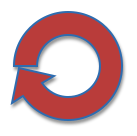To Make Students Learn, Make Schools Smart First
Posted on | May 30, 2013 | Comments Off on To Make Students Learn, Make Schools Smart First
 I learned a thing or three on last Friday, and it’s taken me a week to digest it all. For reasons unknown, I was invited to meet with some very bright teachers who are advisors to the California Council of Science and Technology, the state analogue to the prestigious National Science Academy.
I learned a thing or three on last Friday, and it’s taken me a week to digest it all. For reasons unknown, I was invited to meet with some very bright teachers who are advisors to the California Council of Science and Technology, the state analogue to the prestigious National Science Academy.
The CCST has been wrestling with what to do about digital education, and the invited group of teachers, tech developers, and onlookers spent Friday exploring the efficacy of new modes of learning.
Although I was invited to talk (mostly I introduced a policy paper on technology just released by Policy Analysis for California Education), for most of the day I listened intently to the participants as they described how they used technology in their work and what those experiences were teaching them.
And here’s what I learned: Teachers and tech developers learn the most when there is rapid, reliable feedback about the efficacy of teaching and learning. This observation crosses platform and technology: new tech, old tech, or no tech. When the learning system builds in feedback, learners are better able to correct their mistakes and teachers are more effective in managing the learning process.
Feedback wasn’t the topic of any speech or panel, but its importance kept inserting itself into the conversation. Mohammad Qayoumi, the president of San Jose State University who has been leading the charge toward online learning, talked about the finely grained data that is being generated by students taking remedial or gateway courses. I had been skeptical (and remain so somewhat) about the efficacy of MOOCs (massive open online courses) to successfully teach students who were having learning problems in the first place. But Qayoumi’s story was one of how the course developers tracked student progress and modified lessons when students got stuck.
The theme was echoed by Andrew Ng, co-founder of Coursera, who talked about being able to track student progress keystroke by keystroke, better understanding how students approached problems and where large numbers of them got wrong answers. “When 2,000 students pick the same wrong answer on a quiz, you know that there is something wrong with how information is being presented,” he noted.
Teachers in the room talked about students learning how to collaborate online. The connected environment allowed much greater peer feedback and seemed to be helping conventional knowledge acquisition as well as collaborative. Others saw a merging of instruction, big data, and cognitive psychology.
But turning information into useful feedback is not automatic. Many of the teachers talked about mundane access problems and school district policies that concentrated on acquiring devices rather than understanding what to do with them. Historically, school districts have responded to changes in educational technology by buying devices or bandwidth. Lots of computers or tablets make districts look modern, but they don’t necessarily change teaching and learning.
In reality, building in feedback to teaching with digital technology is just a specific case of the organizational design problem that schools should be dealing with all the time. Making organizations smart, capable of continuous improvement, requires a constant flow of information and reaction to it. This is true for student lessons, teacher performance, and school operations.
Long before Internet-fueled education became the topic of the day, schools got smarter by having student study teams where groups of adults examined student work, data teams of teachers examining results across classrooms, learning walks where teachers visited one another’s classrooms, and student peer evaluation groups. Professional development was aimed at analysis rather than prescription.
These traditional ways of making schools into more productive organizations require managing human resources: creating time in the school day and space to meet, building routines for inspection and analysis of information. Adding computers and the Internet to the process doesn’t replace the need to get the design of the school day or teacher work right. It makes it more important.
Tags: Andrew Ng > CCST > digital learning > Mohammad Qayoumi > smart organizations




